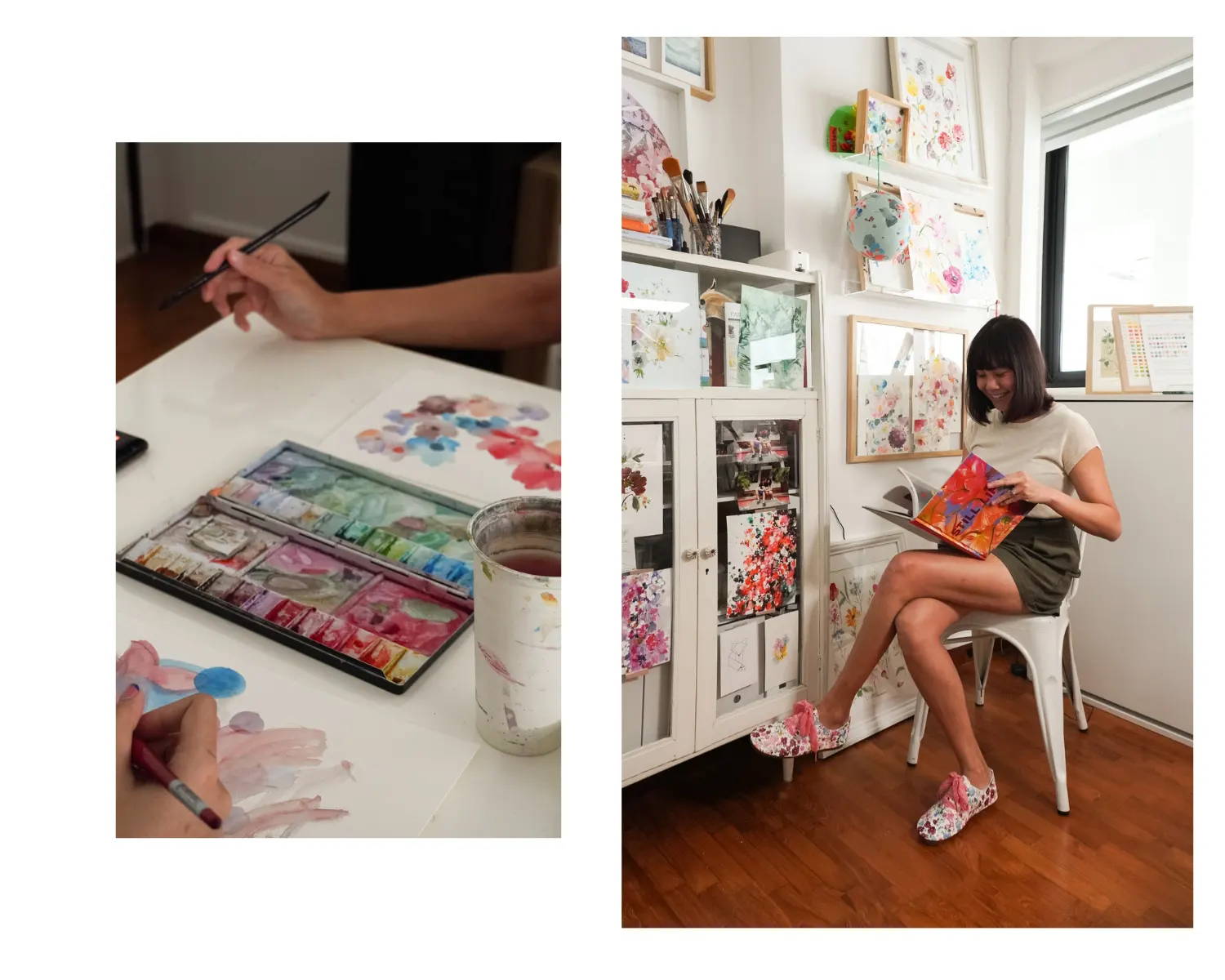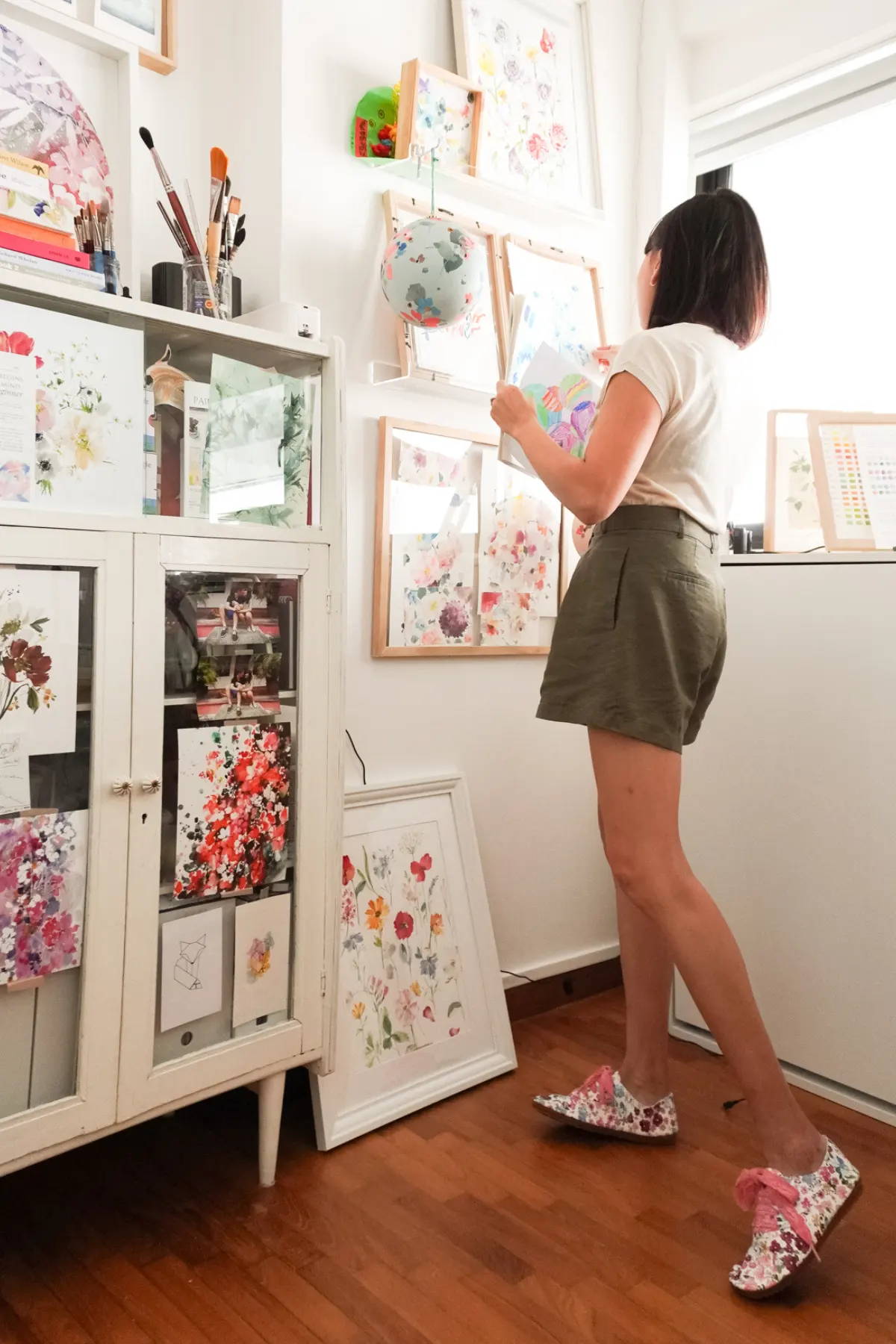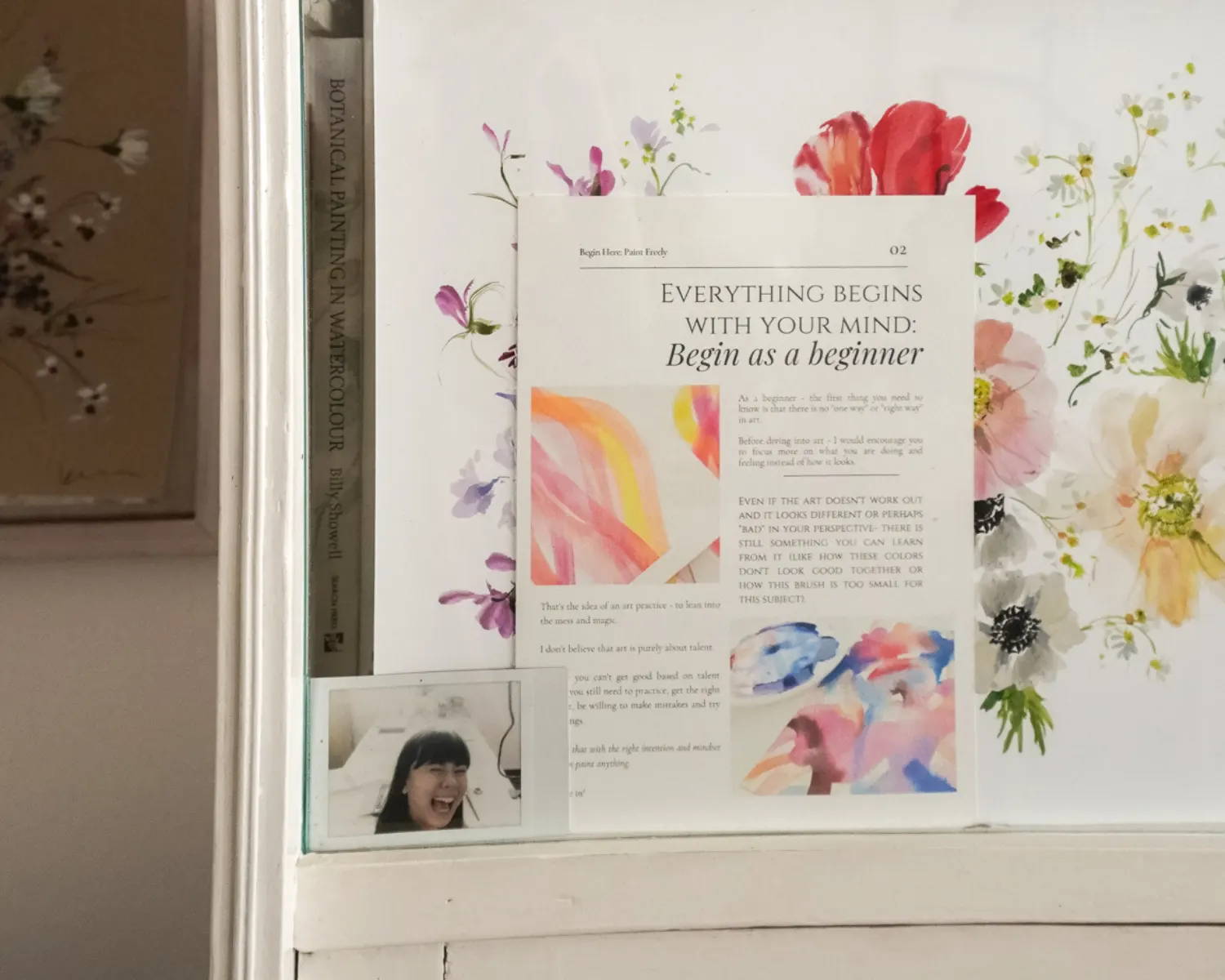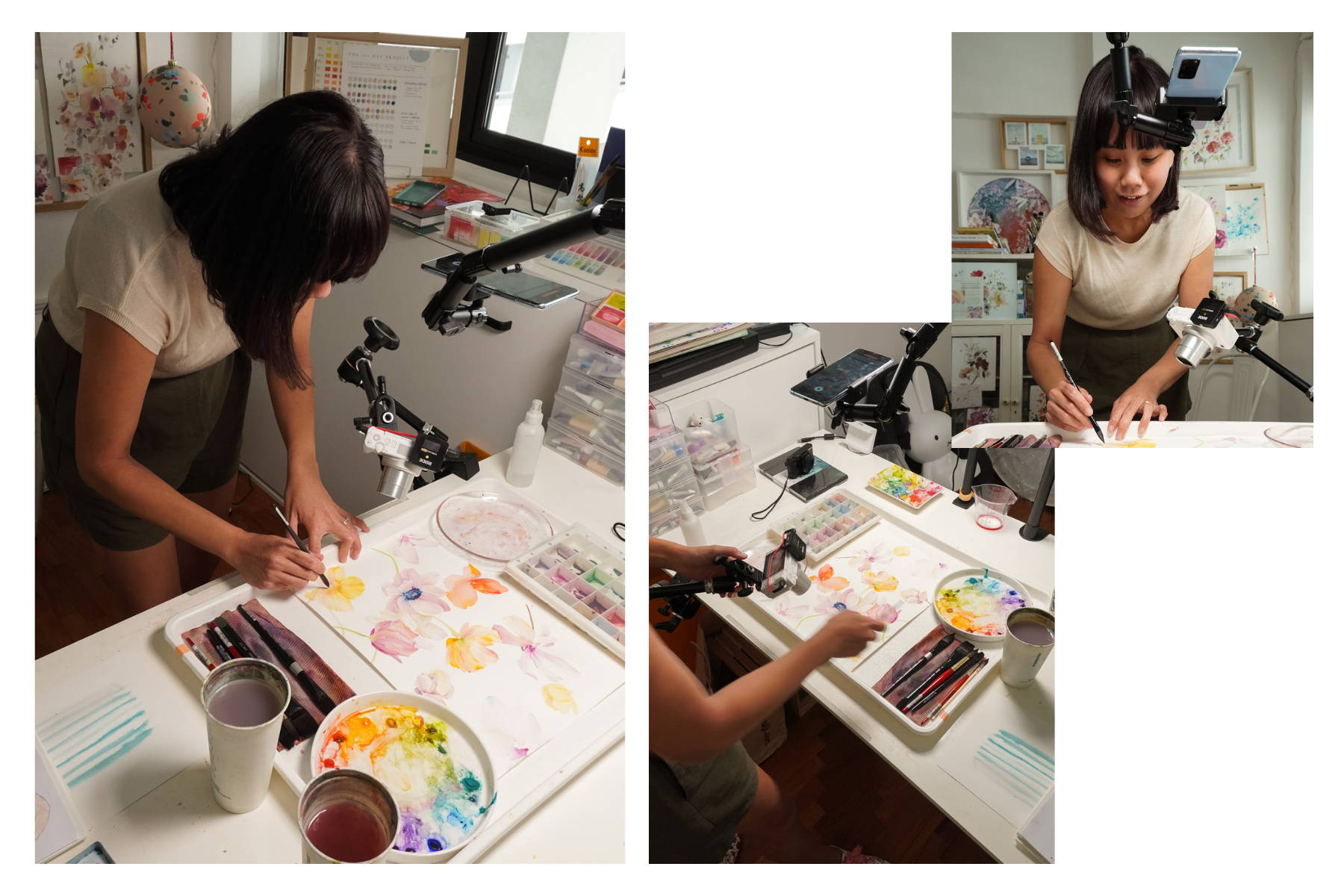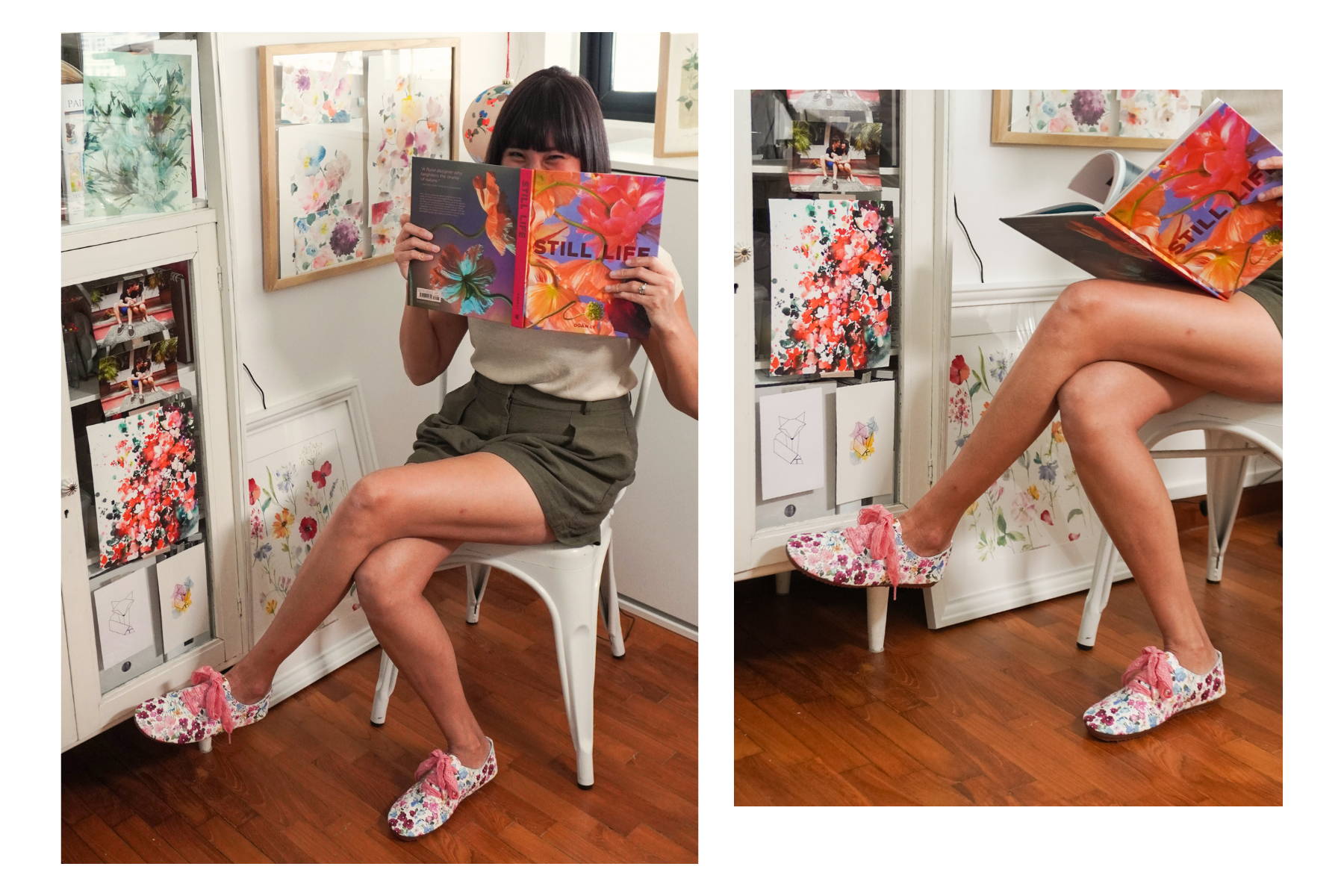Beyond The Classroom
BEYOND THE CLASSROOM
Brush
Movement
The first of a two-part series dedicated to some of our passionate educators who strives to teach & conduct learning beyond the four walls of the classroom.
In an age where education is constantly evolving, it's refreshing to see educators who embrace change and take learning to new heights. These trailblazers are not content with merely delivering lessons; they're dedicated to inspiring, nurturing, and igniting the spark of curiosity within their students.
In this exploration, we'll delve into the boundless world of learning and its profound impact on personal growth and skill development.
We’re joined in conversation with Jillian Boon: watercolour artist & educator.
Jillian is wearing the Anytime Flats, Lizzie in Pink.
What do you love most about teaching?
My most favourite part about teaching is probably the interaction with students — I can show them specific steps on how to do it through the camera. We often assume that teaching has to be in person but it's so crazy that I can teach someone across the world in another time zone exactly what I'm doing. And even more incredible to think that they pick up a new skill merely through a screen.
How did Brush Movement come about?
I never thought that one day, I would trade my 9 to 5 job as a psychologist to become a ‘nap-time painter’, and marrying my 2 passions together to curate a space for people to gain clarity in the chaos of watercolour. I believe that you don’t need to be creative to take up painting - You just need a lot of curiosity and a pinch of courage.
I used to run in-person workshops before pandemic. But when the pandemic hit — I moved things online (and find myself enjoying the flexibility of it.)
I’ve always seen myself as a mentor and guide instead of a teacher. Brush Movement became an online community which bridges the gaps during the learning process — processing, troubleshooting, experimenting. It keeps one’s flame alive because it's so discouraging when you go for a workshop, pay for it and realise that it didn’t work out. It's so hard to compact and teach everything in 3 hours or so. The online space provides a platform for my students to continue their learning process.
"Learning is a two way road - it needs to come from the student and of course, the teacher.
Then it'll be an awesome combo."
Some challenges you faced as a teacher and how you overcame them.
Often, people think that learning always has to come from a teacher.
I believe that learning is a two way road, that it needs to come from the student and of course, the teacher, and then from there, it'll be an awesome combo. But it's hard because the system has kind of primed us that way. When you go to school, you think that the teacher is the authority figure, and therefore only a teacher can teach, and only a teacher can part knowledge to you.
I prefer my student to challenge me, because then I get to become a better teacher, because I won't get complacent with what I know and then think that I'm the expert within my own community. I also show my community that I might not know everything and that I'm also learning, and that sometimes they teach me or show me new things of seeing things. So I think that that's so much more meaningful, it's more empowering for a student. To feel like they also have a role and it's not passive.
"It's okay to make mistakes and they should
make mistakes because that's part of the
learning process."
At this stage of Brush Movement, what does teaching mean to you? How has your views on teaching changed over the years?
When I was younger, I would see being a teacher as someone who needs to know everything, have it all together, & be almost perfect. That's the image that I have of a teacher. But over time, I've learned that when you portray that image, it is so intimidating for a student because they feel like they cannot make mistakes because they are in front of this presence who is all knowing — the master.
I think that the lesson I have started to teach my students is that it's okay to make mistakes and they should make mistakes because that's part of the learning process. Instead of focusing on finding the right answer, because there's no one right answer. I think it's about figuring out that there's many different ways of doing things.
I grew up feeling like there was only one way of doing things. My teacher is the right person. It's not to say that my teacher isn't, but I also feel that my teacher has this method, and if I go to another class with the same curriculum, that teacher is probably going to give a different method. So it's more of a methodology thing and teaching style or even values.
Would you say that you're on your feet a lot on a daily basis?
Instead of sitting down, I stand and paint — it’s very unconventional. It's also because my paintings are usually larger, so then I need a broader perspective.
I'm actually on my feet all day, ironically, even when I'm in the studio. On top of that, I’m a mum of 3 kids — so I'm always running after them.
What would you describe to be a good pair of shoes?
When I was younger, my shoes has to look a certain way - it’s all aesthetics. It has to look good. It doesn't matter if it's going to bite me like crazy, I will still wear it.
But now I definitely prioritise comfort. I cannot afford to be limping, telling my kid, I can't carry you today. And then, of course, aesthetic is also quite important for me. It still needs to look good. The shoe needs to be lightweight. I noticed that when the shoe is heavier, I get more tired — especially when I’m travelling. So something that’s travel friendly is important to me as well.
Shop Teacher's Favourites
































































